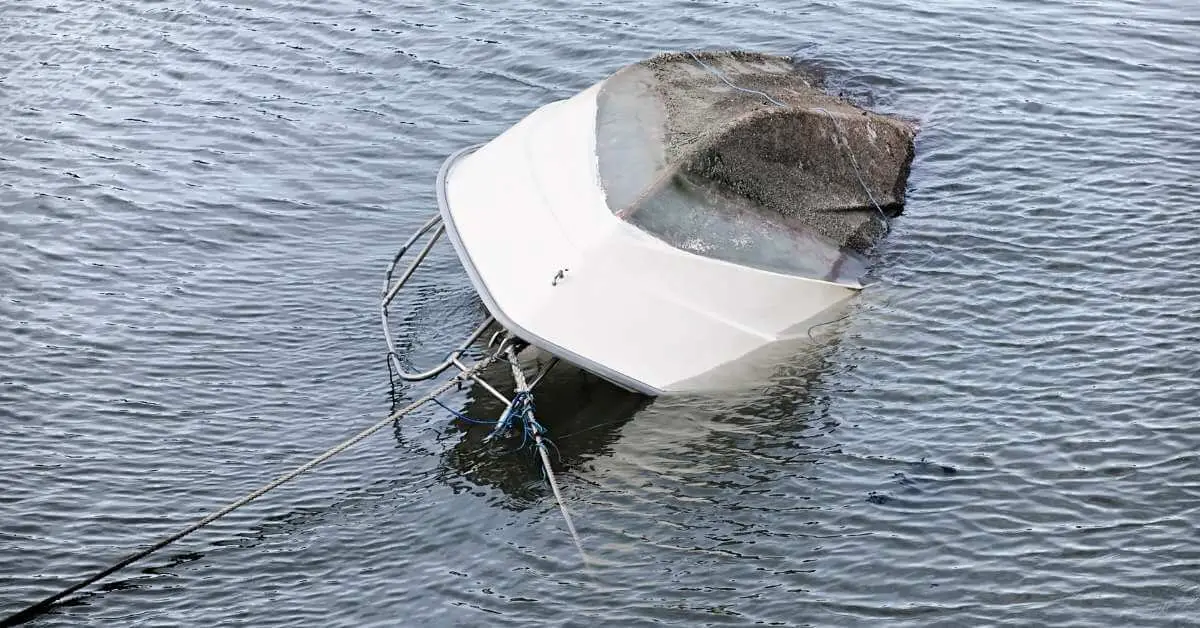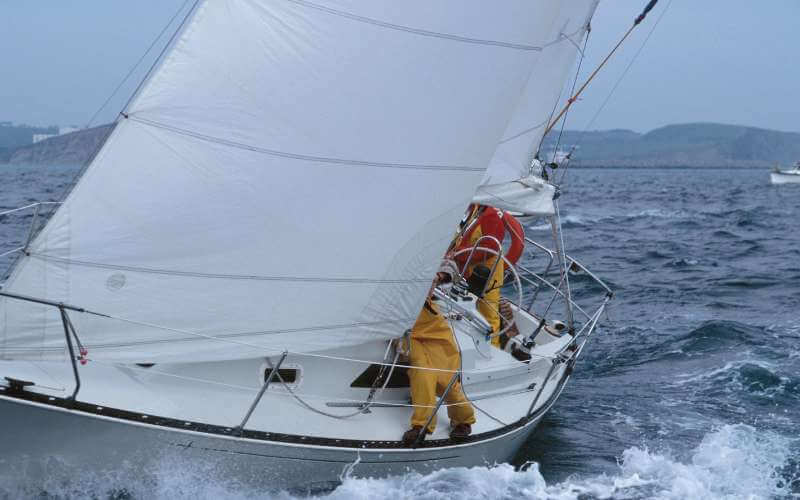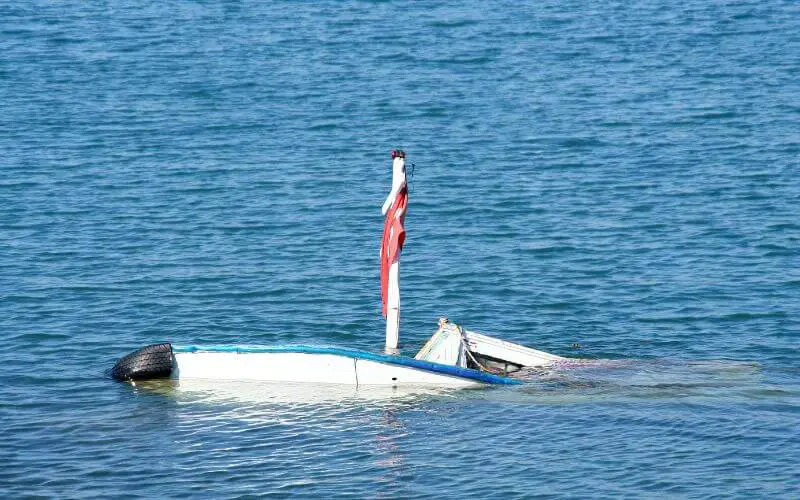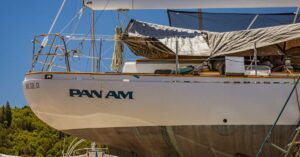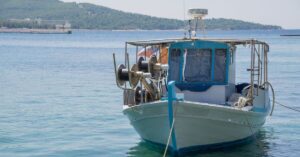Grasping the causes of boat capsizing is crucial whether you are sailing the tranquil sea or confronting a violent storm. A firm understanding of what causes a boat to capsize is vital for all seafarers. A boat’s capsize can swiftly transition a leisurely jaunt into a desperate struggle for survival.
These capsize incidents are often anchored in the conflict between a boat’s integral stability and external forces of disturbance. Factors such as unbalanced weight distribution, compromised buoyancy, or rough weather conditions can lead to such tumultuous incidents.
Awareness of these causes and understanding how they can lead to chaos is a crucial step in ensuring the safety of everyone aboard.
What Is a Capsized Boat? | What Causes a Boat to Capsize
Boat capsizing is a significant event that forces a boat to flip over, causing it to end up upside down or partially or wholly submerged. This is often triggered by factors that disrupt the boat’s stability.
The most common cause of a boat capsizing is improper weight distribution. An unbalanced weight distribution can tip the boat over, often due to passengers or heavy equipment being concentrated in a single area.
External elements like rough water or bad weather conditions are additional contributors. Modest waves or even strong currents can create unstable conditions, making it prone to capsize.
Capsizing poses an immediate danger and demands quick and collected action. Key safety measures include wearing a life jacket or personal flotation device to stay afloat, using signaling devices like flares or whistles to draw attention, and seeking help from emergency services or nearby boats.
(Source: BOATERexam.com)
Boat Types Susceptible to the Risk of Capsizing
Due to their design, size, and specific weight distribution characteristics, capsizing susceptibility greatly varies among boat types. These boat categories are generally regarded as being more susceptive to capsize:
1. Small Boats
Small boats are much more susceptible to capsizing because they lack the stability provided by a larger passenger’s weight and design. This category includes boats like:
- Kayaks and Canoes: Despite their design to smoothly navigate different waterways, kayaks and canoes are easily overturned in rough conditions due to their lightweight and narrow structure.
- Dinghies: Often used for short-distance commutation across bays or harbors, these boats have limited capacity and can quickly capsize if overloaded or hit by strong waves.
- Jon Boats: Popular for fishing in serene lakes or slow-moving rivers, these flat-bottomed boats become unstable in rough water conditions. The flat bottom of the boat affects stability in turbulent waters.
2. High-Speed Power Boats
High-speed powerboats are thrilling but come with their share of risks.
- Speedboats: These low-profile boats designed for speed, if not controlled properly or used in unfavorable conditions, can easily be flipped over by their own wake or that of another vessel.
- Jet Skis: While not technically boats, jet skis are subject to capsizing when users perform reckless maneuvers or lose control.
3. Tall Boats
Their large sail area makes tall boats susceptible to strong winds, which can lead to capsizing.
- Sailboats: While they can normally right themselves after tipping slightly, in extreme conditions, especially when sail loads are not properly managed, they can capsize.
- Yachts: While it’s rare for larger yachts to capsize. But if they’re caught in a storm and broadsided by a large wave, they can be at risk.
4. Fishing Boats
Fishing vessels tend to carry heavy gear and catches, which might lead to stability issues.
- Commercial Fishing Boats: While it’s rare for larger yachts to capsize. But if they’re caught in a storm and broadsided by a large wave, they are at risk.
It’s important to note that safety measures can significantly lower the risk associated with each of these boats, but regardless of what type of vessel you operate, always respect the water and weather conditions, know your boat’s limits, and wear a lifejacket.
Common Causes of Boats Capsizing and How to Prevent Them
Understanding the common causes of capsizing is vital in ensuring boating safety. Factors such as the boat’s type and design, weight distribution, and environmental conditions can all contribute to capsizing. Below, we discuss these causes and how they can be prevented:
Boat Types and Their Vulnerability to Capsizing
Small, narrow boats such as canoes and kayaks are inherently more prone to capsizing due to their unstable nature. Sailboats with large sail areas and fishing boats overloaded with equipment and passengers may also capsize under strong winds or rough waters.
Old boats powered by outboard engines possess low transom cutouts, which could lead to the boat filling up with water simply by slowing down too quickly, particularly if there is too much weight in the stern.
Prevention Tips:
- Properly distribute weight
- Avoid overloading the boat
- Maintain a low center of gravity
- Check the weather conditions
- Stay alert to rough water
- Adhere to safety guidelines
Rough Water and Sudden Squalls
Boats become more vulnerable to instability and loss of control when faced with rough water characterized by large waves and strong currents. Sudden squalls or intense, rapidly-developing windstorms can exacerbate this situation, increasing the likelihood of a boat capsizing.
Prevention Tips:
- Monitor weather conditions closely, particularly wind speeds
- Avoid venturing out in rough water or during sudden squalls
- Wear life jackets
- Equip the boat with necessary emergency equipment, such as signal flares and life rafts
Overloading and Exceeding Capacity
Overloading a boat or exceeding its maximum capacity can lead to boat instability, significantly increasing the risk of capsizing. An overloaded boat typically has a raised center of gravity, making it more susceptible to tipping over, particularly in rough water or strong waves.
Prevention Tips:
- Adhere to the manufacturer’s guidelines for weight distribution and maximum capacity
- Prioritize a well-balanced boat with proper weight distribution
- Avoid overburdening the boat’s flotation devices by not exceeding the recommended capacity
Poor Weight Distribution
Poor weight distribution can negatively affect A boat’s stability, potentially leading to capsizing. An unbalanced load can cause the center of gravity to shift, making the boat more prone to tipping over.
Prevention Tips:
- Ensure proper weight distribution to keep the boat level
- Avoid concentrating excessive weight on one side
Boat Familiarity and Proper Handling
Unfamiliarity with a boat’s design and functionality can contribute to unstable situations on the water, leading to potential capsizing incidents. Being familiar with the boat, its capacity limits and recommended weight distribution is fundamental for an enjoyable and safer boating experience.
Prevention Tips:
- Familiarize yourself with the boat’s stability and weight distribution
- Understand the specific features that impact the boat’s buoyancy
- Learn how the boat responds to different water conditions
- Practice proper handling to avoid accidents
Weather Forecast Reliability
Bad weather conditions and poor forecasts can significantly increase the risk of a boat capsizing. Strong winds and large waves can adversely affect boat stability, causing it to capsize.
Prevention Tips:
- Check the weather forecasts before setting sail
- Stay updated on any changes in weather conditions
- Use weather routing advice to avoid areas of rough water
- Equip the boat with necessary safety equipment, such as life jackets and distress signals
Understanding the common causes of capsizing and following preventive measures can ensure a safer and more enjoyable time on the water.
What to Do If a Boat Capsizes or Falls Overboard: A Step-by-Step Guide
Experiencing a boat capsizing can be an alarming experience, but it is crucial to remain composed and promptly execute safety procedures. Here’s what you need to do to optimize your chances of survival:
Step 1: Check Everyone’s Safety and Condition
Immediately assess everyone’s whereabouts and condition. Ensure everyone is accounted for and identify if anyone is injured or in immediate danger.
Step 2: Put on Life Jackets
Without any delay, put on life jackets. They provide essential buoyancy that could be a difference between life and death in emergencies.
Step 3: Signal for Help
Use any available equipment to signal for help. This could be a whistle, horn, or distress signal. The goal is to attract attention and alert nearby vessels or the coast guard of your distress.
Step 4: Preserve Energy and Stay Afloat
Conserving as much energy as possible while maintaining your position above water is key. Stay with your boat or any buoyant objects. Avoid swimming long distances unless necessary, as it can lead to rapid exhaustion.
Step 5: Get Rid of Restrictive Clothing
If you can do it safely, remove heavy or restrictive clothing that might impede your ability to swim effectively or stay afloat. Clothes soaked with water can become heavy and tire you out quickly.
Maintaining a calm and collected mindset is crucial during a boat capsizing. Understanding these steps and being equipped with the right safety gear will unquestionably enhance your chances of survival in such critical circumstances.
Frequently Asked Questions
What are some common signs that a boat is at risk of capsizing?
Common signs that a boat is at risk of capsizing include:
- Unbalanced weight distribution
- Overloading with people or heavy items
- Poor stability is due to adverse weather conditions, such as strong waves or sudden wind gusts
Are there any specific types of boats that are more prone to capsizing?
Yes, certain types of boats are more prone to capsizing. Smaller boats, such as dinghies and fishing boats with large cockpits, have a higher risk of capsizing than larger that are more stable boats.
What are some precautions one can take to prevent a boat from capsizing?
To prevent a boat from capsizing:
- Ensure even weight distribution
- Avoid overloading
- Be aware of your surroundings, including weather conditions and waves
- Approach waves head-on and slow down when turning to maintain stability
What actions should be taken immediately after a boat capsizes to ensure safety?
After a boat capsizes, follow these steps to ensure safety:
- Check on everyone and get out of the water
- Account for all passengers
- If possible, attempt to upright the boat. If not, climb onto the hull and stay out of the water to retain body heat
Wrapping UP
In conclusion, if your boat capsizes, prioritize checking everyone’s safety. Wear life jackets promptly and signal for help. Conserve energy by latching onto the boat or floating objects, and avoid unnecessary swimming. Remove heavy clothes, if possible, to ease swimming or staying afloat. Staying calm, acting swiftly, and applying these steps can boost survival odds during a capsizing incident.
Related Article: Exploring the Common Causes of Boating Accidents

